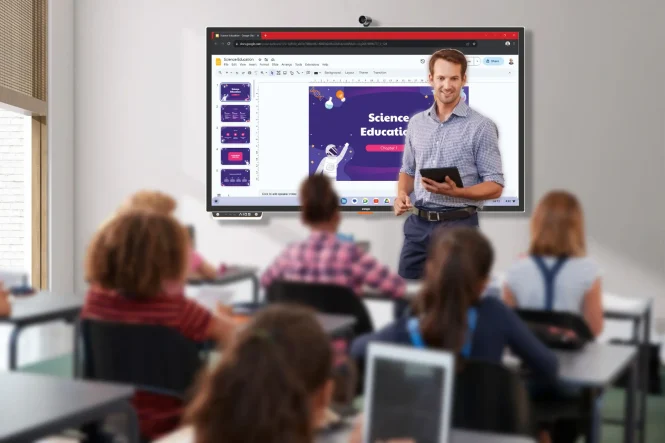

Should technology replace teachers? This question sparks debate in educational circles, and the answer is, surprisingly, not a simple yes or no. The integration of technology into the classroom has revolutionized teaching and learning, offering countless opportunities for engagement and customization. However, the essential human connection and nurturing role of the teacher remain unparalleled. This article will delve into the arguments for and against replacing teachers with technology, examining the advantages and disadvantages, and exploring how technology can be best used to enhance, not replace, the traditional role of teachers.
The Promise of Technology in Education
Enhancing Accessibility and Personalization
Technology offers unprecedented opportunities for personalized learning. Adaptive learning platforms can adjust to individual student needs, ensuring that everyone receives tailored instruction. Online resources provide access to a vast amount of information, expanding learning beyond the confines of the classroom and allowing students to explore subjects at their own pace. This is especially valuable for students in remote areas or those with unique learning styles. For example, Khan Academy’s free online courses have provided a global learning resource for students of all ages, demonstrating the reach and potential of technology in education. Further, technology allows for immediate feedback and practice, promoting a more proactive approach to learning.
The Limitations of Technology
The Human Element in Education
While technology is a powerful tool, it cannot replicate the complex emotional and social interactions that occur in a traditional classroom setting. Teachers are more than just providers of information; they provide guidance, mentorship, and emotional support to students. A teacher’s ability to connect with students, recognize their emotional needs, and provide personalized encouragement are crucial for academic success and overall well-being. Technology alone cannot provide this crucial human touch. For example, an empathetic teacher can quickly identify and address a struggling student’s emotional needs, providing tailored support, something an AI assistant might miss.
Blended Learning Models
Optimizing Technology’s Role
The most effective approach likely lies in a blended learning model. Technology can complement the work of teachers, assisting with tasks like administrative work or delivering content. However, the teacher remains essential for guiding students, fostering critical thinking, and providing individualized support. This means technology can be used to enhance student engagement by creating interactive lessons or creating diverse learning experiences—but it is still the teacher that is the facilitator. For example, teachers can use interactive educational software to engage students and make learning more entertaining and impactful.
Preparing Students for the Digital Age
Essential Digital Literacy
Technology is an integral part of modern life. Students need to develop digital literacy skills, learning how to use technology effectively for learning and life. Teachers must therefore equip students with not only academic knowledge but also digital skills. This includes critical evaluation of information found online and the ability to use technology ethically and responsibly.
Teacher Training
Equipping Educators
Teachers must be adequately prepared to integrate technology into the classroom effectively. Comprehensive training programs on using digital tools and adapting teaching strategies are needed to maximize the benefits of technology in education. This ongoing training allows teachers to feel confident and comfortable with the technology they employ in their classrooms.
[{“question”: “What are the potential negative impacts of technology on student learning?”,”answer”: “While technology offers many benefits, it can also have negative impacts if not used correctly. One concern is that excessive screen time can lead to eye strain, sleep disturbances, and potential health issues. It’s crucial that technology use is balanced with other activities, such as physical activities. Another concern is the development of digital distractions, which can negatively affect concentration and engagement in learning. Teachers need to guide students to use technology appropriately and to avoid excessive screen time. Finally, students might become overly reliant on technology instead of developing their critical thinking and problem-solving abilities.”},{“question”: “How can teachers effectively integrate technology into their teaching?”,”answer”: “Effective integration of technology requires a thoughtful approach. Teachers should start by identifying how technology can enhance existing learning activities, rather than replacing them. Developing clear learning objectives and aligning technology use to these goals is crucial. Furthermore, teachers should create a supportive learning environment that encourages students to embrace technology in a safe and appropriate manner. Technology integration also includes appropriate training for staff and continuous professional development to ensure that the technology is used effectively and to the fullest extent. Finally, regular evaluation and feedback loops are necessary to track the effectiveness of technology use and to adapt to the ever-changing technological landscape.”},{“question”: “What are the ethical considerations of using technology in education?”,”answer”: “The use of technology in education also raises important ethical considerations. Privacy and data security are crucial concerns, especially with the increasing use of online learning platforms and educational applications. Schools and educators need to ensure that data collected about students is handled ethically and responsibly, respecting their privacy rights. Furthermore, issues related to access and equity need to be considered, as some students may lack access to technology or reliable internet service. It is essential that schools use technology in a manner that does not exacerbate existing inequalities but rather that aims to create a level playing field for all students.”}]
In conclusion, the debate about whether technology should replace teachers is complex and multifaceted. While technology offers immense potential for personalized learning and accessibility, it cannot fully replicate the crucial human element in education. The optimal solution likely lies in a blended approach, integrating technology effectively while retaining the irreplaceable role of teachers in fostering critical thinking, emotional support, and interpersonal skills. For educators, this means embracing continuous learning about the latest tools and strategies, while students should be taught how to effectively utilize technology for learning. This way, education can take advantage of the potential of technology, ensuring that students have access to high-quality education, regardless of location and circumstances.